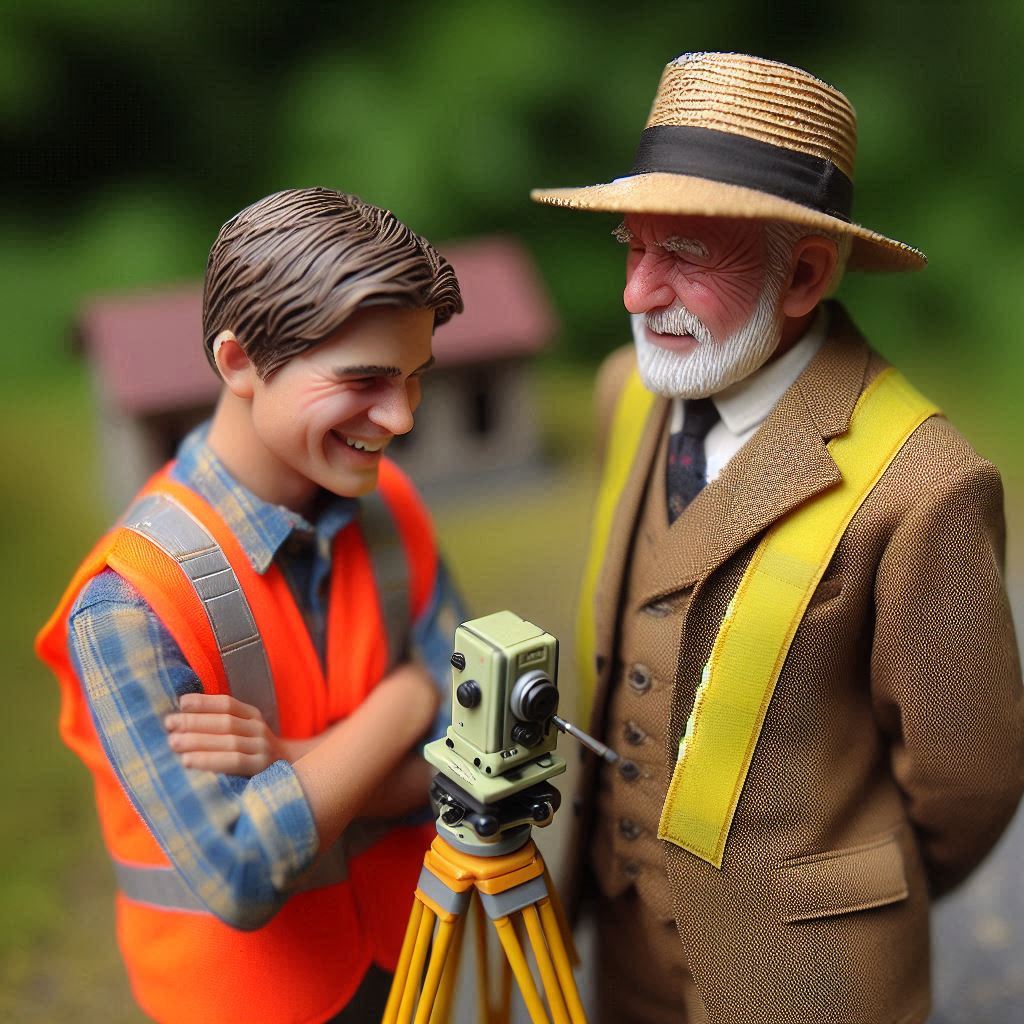Advanced Geodetic Surveying
Explore principles and applications of geodetic surveying, including GNSS technology and geoid modeling.

Boundary Law and Legal Principles
Learn about boundary determination, property law, easements, and case studies of boundary disputes.

GIS Applications in Surveying
Integrate GIS technology with traditional surveying methods for land management and planning.

Hydrographic Surveying
Learn techniques and equipment used in surveying bodies of water, including sonar and echo-sounding.

Remote Sensing and Photogrammetry
Use aerial and satellite imagery for mapping and surveying with image processing and data extraction.

Construction Surveying and Layout
Focus on site preparation, layout of structures, grading, and as-built surveys in construction projects.

Ethics and Professionalism in Surveying
Examine the ethical responsibilities of professional land surveyors and ethical decision-making.

Survey Data Analysis and Adjustment
Learn advanced techniques for analyzing and adjusting survey data using software tools.

UAV for Surveying
Explore the use of drones in surveying and mapping with flight planning and data collection.

Environmental and Wetlands Surveying
Focus on surveying in environmentally sensitive areas and the role of surveyors in conservation.

Subdivision Design and Planning
Cover principles of designing and planning subdivisions with zoning regulations and infrastructure planning.

Advanced GPS Techniques
Learn advanced methods for using GPS technology in surveying with real-time kinematic positioning.

Cadastral Surveying
Explore methods and principles of cadastral surveys for property boundaries and legal purposes.

Land Use and Planning
Focus on the surveyor's role in land use planning and development with urban and regional planning.

Marine and Coastal Surveying
Cover techniques for surveying coastal and marine environments with shoreline mapping and erosion studies.

Surveying with Total Stations
Provide in-depth training on using total stations for precise measurements and data integration.

Topographic Surveying
Focus on creating detailed topographic maps with contour mapping and terrain modeling.

3D Laser Scanning
Teach principles and applications of 3D laser scanning technology for data acquisition and modeling.

Water Rights and Surveying
Explore the intersection of water rights law and land surveying with boundary and rights disputes.

Surveying Safety and Risk Management
Focus on the importance of safety in surveying operations with hazard identification and risk management.

Forensic Surveying
Focuses on applying surveying techniques in legal investigations and disputes, including accident reconstruction and expert testimony.

Historic and Archaeological Surveying
Covers methods for surveying historical and archaeological sites, including landmark preservation and compliance with conservation laws.

Geospatial Data Management
Explores management and integration of geospatial data, including storage solutions and metadata standards.

Utility Mapping and Underground Surveys
Teaches techniques for locating and mapping underground utilities using ground-penetrating radar and electromagnetic detection.

Floodplain Mapping and Management
Focuses on the surveyor's role in floodplain management, including risk assessment and the creation of floodplain maps.

Surveying in Remote and Challenging Environments
Explores the unique challenges of surveying in remote or hazardous environments with specialized equipment and safety protocols.

Renewable Energy Site Surveys
Covers surveying requirements for renewable energy projects, including site selection and environmental impact assessments.

Vertical and High-Rise Construction Surveying
Focuses on surveying challenges in vertical construction projects, including precision alignment and vertical control networks.

Surveying Standards and Regulations
Provides an understanding of national and international surveying standards, including ISO standards and ASTM specifications.

Continuing Professional Development Planning
Teaches surveyors how to plan and manage their ongoing professional development, including identifying skills gaps and tracking activities.

Datum Transformations and Conversions
Explores techniques and mathematics behind transforming and converting between different geodetic datums.

Vertical Datums and Applications
Focuses on the principles and applications of vertical datums, including tidal, orthometric, and ellipsoidal heights.

The Legal Aspects of Surveying Datums
Examines legal implications related to the use of datums in land surveying, including regulatory compliance and case law.

Datum Modernization and Implementation
Covers efforts to modernize geodetic datums, including the transition to new datums such as the North American Terrestrial Reference Frame (NATRF).

Marine and Coastal Datum Applications
Focuses on the use of datums in marine and coastal environments, including tidal datums and sea level rise considerations.

Boundary Law and Datum Usage
Explores the intersection of boundary law and datum usage, including the impact on boundary determinations and legal descriptions.

Understanding and Using NAD83 and NAD27
Provides an in-depth look at the North American Datum of 1983 (NAD83) and the North American Datum of 1927 (NAD27).

Global Datums and International Surveying Standards
Examines global datums such as WGS84 and their use in international surveying projects and cross-border challenges.

Legal Case Studies in Surveying and Datums
Uses real-world case studies to explore legal issues related to the use of datums in surveying and boundary issues.

Surveying and Land Use Law
Focuses on legal principles governing land use and how they intersect with surveying practices and land development regulations.